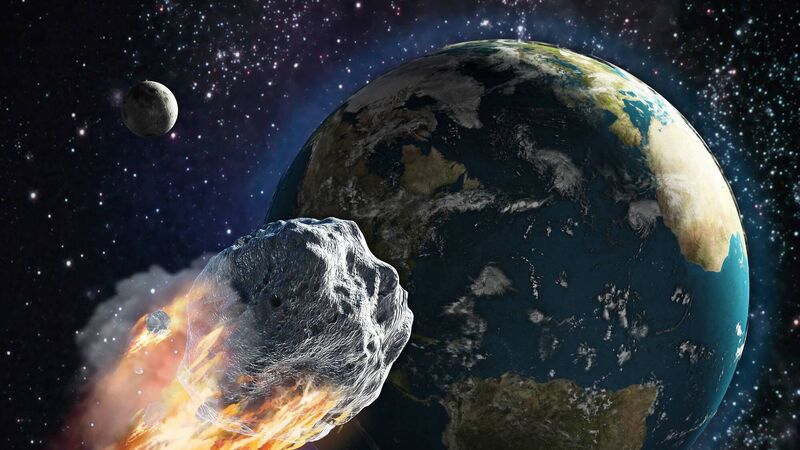Forensic examination of asteroid dust

Richard Collins: "We owe our existence to a 10 kilometre-wide lump of space debris, which slammed into the Yucatan Peninsula in the Gulf of Mexico around 66 million years ago. Weighing as much as a mountain, and travelling at 20 kilometres per second, its impact left a crater 200 kilometres wide and 20 milometres deep, centred offshore near Chicxulub, ‘the Devil’s flea’ in Mayan."
I am become Death, the destroyer of worlds — the Bhagavad Gita
We owe our existence to a 10 kilometre-wide lump of space debris, which slammed into the Yucatan Peninsula in the Gulf of Mexico around 66 million years ago. Weighing as much as a mountain, and travelling at 20 kilometres per second, its impact left a crater 200 kilometres wide and 20 milometres deep, centred offshore near Chicxulub, ‘the Devil’s flea’ in Mayan.
A tsunami 1.5 kilometres high travelled outwards. The object and the rocks it impacted were vaporised. A cloud of dust rose to the stratosphere, creating a doomsday shroud which blocked out sunlight all over the world. Temperatures dropped in the semi-darkness in a nightmarish ‘nuclear winter’. Photosynthesis virtually ceased. Plant-eaters, such the giant dinosaur diplodocus, died of cold and hunger. Then carnivores, like tyrannosaurus which preyed on them, went to the wall.

But there were survivors. Turtles, carrying their homes on their backs, retreated into their shells to avoid hypothermia. Slow metabolism enabled them to survive until the air cleared. When it did so, 70% of animal species were gone. Turtles had the place almost all to themselves. They prospered.
But they were other beneficiaries. Hairy shrew-like creatures, feeding on insects millipedes and centipedes, had to remain small and self-effacing during the ancien régime. ‘Tiocaigh ár lá’, might have been their hope. They had learned to generate their body-heat internally, enabling them to run fast and hunt at night. Unlike most of the reptiles, which needed sunlight to warm them, they made it through the lean times. Indeed, a terrible beauty was born; the Age of Mammals had dawned. It would lead to the evolution of a most successful, if highly destructive, species; Homo sapiens.
But what do we know about the origins of the strange object to which we owe our very existence? Geo-scientists based at the University of Cologne have studied the forensics of the apocalyptic visitation. In a paper just published, they describe their findings.
When the dust generated by the doomsday collision settled, it formed a layer which can still be seen today in rocks at locations worldwide. The researchers collected samples of it and analysed them.
More than 80% of the ‘shooting stars’ we often see at this time of year are ‘meteors’. Almost all of them end as fireballs on entering the atmosphere. When, very occasionally, part of one survives to reach the ground, it becomes a ‘meteorite’. The composition of meteorite rock and metal is, therefore, well known. Analysis of the Chicxulub visitor’s constituents showed that it was not one of them.
The object had come from much further away than meteorites; the Asteroid Belt in the outer solar system. Its material "is consistent with that of a carboniferous asteroid that formed outside of Jupiter’s orbit during the formation of the solar system" declares lead author Mario Fisher-Godde on the Cologne University website. It had been orbiting the sun since the time the Earth was formed.
"I am the apocalypse itself, that is to say, the ultimate and first event of the end" — Jacques Derrida.







